Remixing a song is all about taking something familiar and spinning it into your own creation.
It requires hustle, dedication, creativity, and a solid grip on your music production tools.
You’ve got to know the rules of the game to make sure your remix shines without stepping on any legal toes.
As music producers, understanding how to remix a song is key to leaving a lasting impression in the music world.
Plus, help you give old tunes new life and break out of beat block.
In today’s article, we’ll break down:
- What remixing really means & how to remix a song creatively ✓
- 13 tips, tricks, and techniques for remixing a song ✓
- How to stay on the right side of copyright law ✓
- Getting creative in your digital audio workstation (DAW) for you ✓
- The magic of sampling and sound design ✓
- Tweaking vocal tracks to perfection ✓
- Adjusting tempo and key of a song ✓
- Adding your own chord progressions ✓
- Creating unique synth sounds ✓
- Mastering the mix for that professional sound ✓
- The final touch: mastering your remix ✓
- How to make waves in remix competitions ✓
- So much more about how to remix a song (and get it heard) ✓
By the end, you’ll be able to remix songs like a true professional.
Not only will your tracks sound show-stopping, but they’ll also reflect your unique style as a music producer and blow the competition away.
So, let’s dive into the exciting world of remixing, where your music has the power to take over and get people hooked.
Let’s dive in…
Table of Contents
- How to Remix a Song: Breaking Down the Remixing Process
- 13 Creative Techniques for Remixing Songs (+ Pro Tips!)
- #1. Finding Inspiration from Other Remixes
- #2. Understanding Sampling & Sound Design
- Pro Tip
- #3. Manipulating Vocal Tracks
- NOTE
- #4. Playing Around with the Original Tempo and Key
- Pro Tip
- #5. Getting Creative with Chord Progressions
- #6. Developing Unique Synth Sounds
- Pro Tip
- #7. Rhythmic Innovations: Percussion Sounds and Basslines
- #8. Utilizing Effects for Uniqueness
- #9. Breaking Down the Original Structure of Popular Songs
- Pro Tip
- #10. Extracting and Utilizing Vocal and Instrumental Tracks
- #11. Tweaking the Existing Melody
- Pro Tip
- #12. Mixing and Mastering Your Remix
- Note
- #13. Participating in Remix Competitions & Remix Contests
- How to Remix a Song: Final Thoughts
How to Remix a Song: Breaking Down the Remixing Process

A remix is essentially your creative spin on an existing song, taking elements from the original track and altering them to produce an entirely new sound or vibe.
It can involve anything from tweaking the tempo and pitch to adding new melodies, basslines, effects, beats, etc.
With tools like digital audio workstations (DAWs), innovative software, and creative techniques, remixing music has absolutely exploded.
It allows for endless experimentation and innovation that people love to hear.
Learning how to remix a song lies in breaking down the original track to understand its foundational elements.
This means, when you remix music, you should always be listening intently to the:
- Vocal tracks
- Instrumental layers
- Overall structure
It’s all about pinning down what makes that song work and how you can be making remixes that enhance, and work off of those highlights.
For example, in genres like hip-hop and trap, the beat, bassline, and lyrical flow are some key components that define the character of a song.
So, your job is to really analyze those components and see how you can play around with them to add some mind-blowing twists and turns.
The challenge as a music producer, however, is to maintain the spirit and vibe of the original track, only with your unique twist added.
The remixing process is not just about altering an existing song 一 it’s an opportunity to take the vision of the original artist/their audience, and make it more captivating.
Consider how remixes of popular songs can breathe new life into the track, introducing it to new audiences or making it relevant again.
Successful remixes often strike a balance between the essence of the original song and the spice of your innovation (always think outside the box!).
Basically, it will show off your signature sound as a music producer while paying respect to the original song and giving people that nostalgic vibe.
-
The Legal Side of Remixing
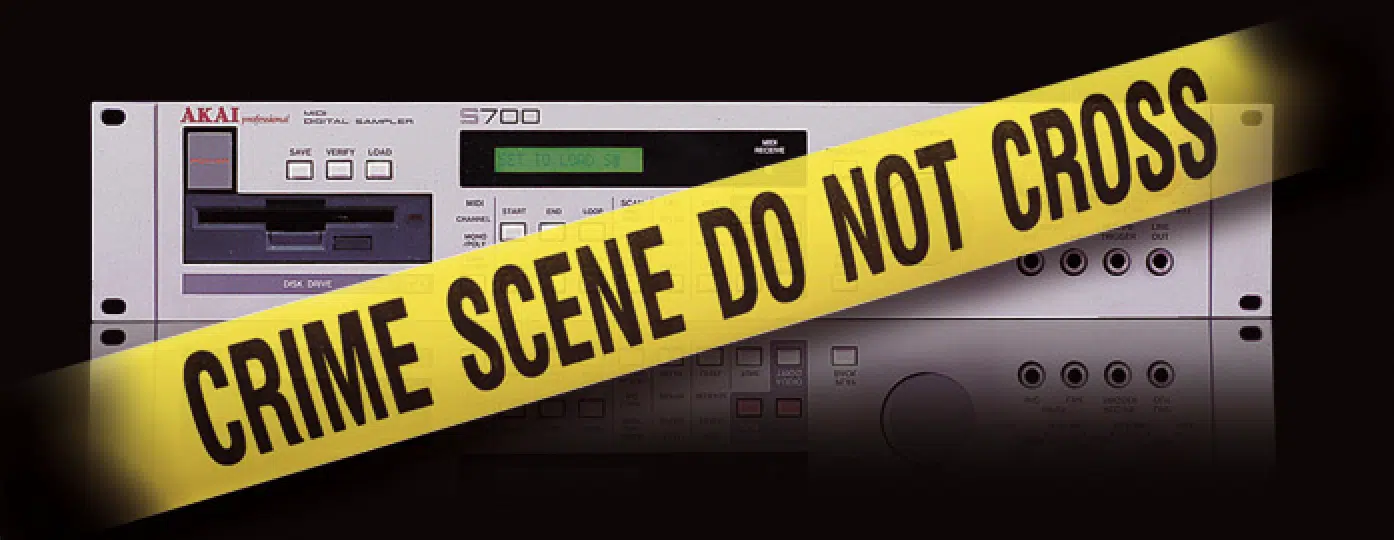
Before learning the creative side of how to remix a song, it’s pivotal to understand the legalities of remixing.
Using someone else’s music or a popular song without permission can lead to copyright infringement and a headache that will never go away.
So, it’s super important to either obtain clearance from the recording artist or record label and work within the constraints of any good remix contests.
It often provides legal access to original stems/original project file and promote your official remix.
Remix contests are invaluable when you remix music as it offers legal stems and a platform to gain exposure and feedback from the music production community.
These competitions can be your ticket to a real music industry career.
They’ll allow you to diplay your skills as a music producer on a larger stage and possibly catch the attention of a record label with your original songs.
Or even a motivated independent artist looking for fresh remixes of their songs.
-
Pro Tip
Understanding copyright laws and fair use can help you navigate the complexities of remixing.
While good remix contests offer a straightforward path, creating unofficial remixes requires a more careful approach.
You might even have to potentially reach out for permission or leverage content under Creative Commons licenses.
Educating yourself on these issues can save you from legal blah blah down the line.
13 Creative Techniques for Remixing Songs (+ Pro Tips!)
If you’re going to remix music like a professional, it requires a solid foundation, solid end vision and everything in between. From analyzing the original song thoroughly to incorporating unique sound design, let’s break it all down.
#1. Finding Inspiration from Other Remixes

Inspiration is the fuel for your remixing fire, and listening to a wide range of remixes can spark a few ideas and help develop your own signature sound/style.
Pay attention to how other music producers rework vocal tracks, manipulate beats, or blend genres (like hip-hop/rock and electronic music) to create something new.
It will enhance your understanding of what’s possible and what keeps people hooked.
As you study the original breakdown, pay attention to the techniques that stand out to you and start making music using those techniques, bringing them up a notch.
This way, you’ll know other people will be captivated because it hooked you in.
Perhaps a remixer has flipped a classic hip-hop track into a trap banger by speeding up the tempo and adding heavy 808s.
Or, maybe they’ve taken a minimalist approach, stripping back the original to highlight just the vocal tracks over a bare beat.
When you’re learning how to remix a song, these little details can be an inspiration and serve as a technical blueprint for your own song.
Remember, the goal isn’t to copy but to learn and adapt… each unique remix should reflect your taste and skills.
As you listen to and analyze other remixes, always think about how you can apply similar techniques, implement better ones, or create a hybrid.
When you remix songs, it’s all about those little touches that let everybody know that your signature sound was implemented.
#2. Understanding Sampling & Sound Design

Sampling plays a fundamental role in the remixing process.
It involves taking snippets of sound from the original track or other sources and manipulating them into something entirely new.
This could mean sampling a distinctive vocal phrase and throwing it into your beat with some effects or extracting a catchy melody to be the foundation for your remix.
Sampling is about finding those moments in the original song that spark inspiration and then transforming them into elements that enhance your own remix.
Sound design is, of course, equally important 一 helping you create your own signature sounds or modify existing ones to fit your new original song.
This might involve designing new synth sounds to add to the instrumental tracks or creating unique effects that give the remix a distinctive atmosphere.
For hip-hop and trap remixes, the ability to create deep, resonant bass sounds and crisp, clean drum hits is make-or-break.
By combining your sampling skills with sound design, you can produce a good remix that feels both familiar and fresh.
One that pays homage to the original while introducing listeners to a new, super elevating sonic experience.
-
Pro Tip
The combo of sampling and sound design in your digital audio workstation, enhanced by your chosen plugins/music editing software, gives you the freedom to experiment and innovate.
Whether you’re remixing a well-known lo-fi track into a trap banger or taking popular songs and giving it a hip-hop twist, these techniques are key.
With them, you can create something truly original and innovative.
Remember, the best remixes often come from a place of genuine creativity and a deep understanding of both the original song and the production tools you’ll work with.
By mastering these aspects of music production, you’ll be well on your way to making remixes that captivate and inspire.
#3. Manipulating Vocal Tracks
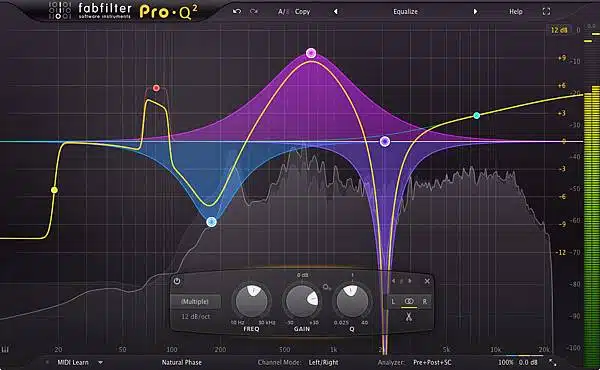
Vocal tracks often carry the essence of the original song, making them a focal point in many remixes.
Manipulating these classic tracks can change the song’s vibe in a super intriguing way, allowing you to manipulate it to fit any genre you’d like.
Techniques like pitch-shifting can transform the mood of the vocals and make them more haunting or energetic, depending on your vision of course.
For instance, pitching down the vocals slightly can add a serious, gritty feel, perfect for a trap song remix.
Creative use of effects can also add new dimensions to the vocal tracks, like:
These effects can help the vocals sit well in your new instrumental context or even become a rhythmic element of their own to help your song shine.
Just think of how Travis Scott uses not not just as a pitch correction tool but as a signature sound that defines his popular music.
NOTE
Another technique involves chopping up the vocal tracks and rearranging them to create new melodies or hooks.
This can be particularly ideal for genres like hip-hop, where the rhythm and flow of the vocals play a key role.
By slicing vocals into smaller samples and playing with their arrangement, you can construct entirely new vocal lines that give your own remix a unique identity.
#4. Playing Around with the Original Tempo and Key
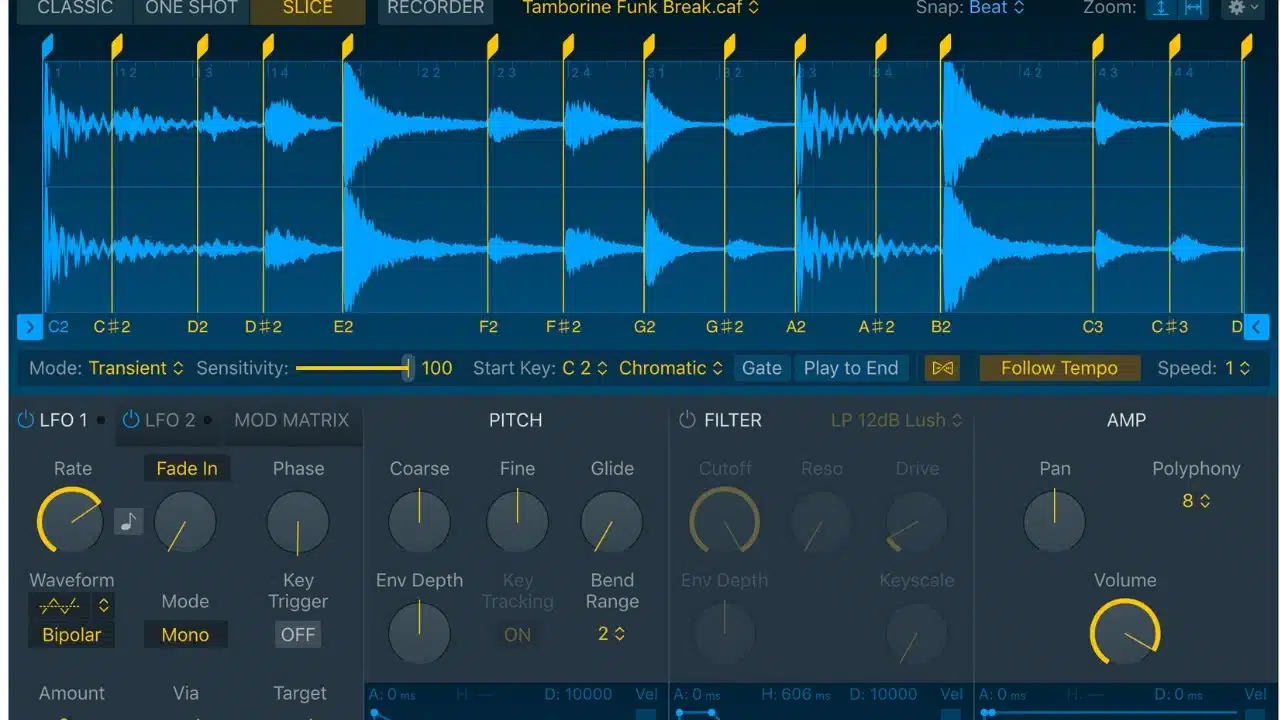
Changing the original song’s tempo and key is a powerful way to give your remix a new life and achieve some uniqueness.
For example:
- Increasing the tempo 一 Can inject energy into a track (for a club remix).
- Slowing the tempo down 一 Can create a laid-back vibe, perfect for a chill trap version.
Your digital audio workstation makes these adjustments straightforward 一 allowing for tempo changes without losing audio quality.
Similarly, altering the key can help you match the vocal tracks to new instrumental elements you’ve added or simply give the original song a different emotional tone.
This is where your knowledge of music theory can come into play, enabling you to choose a new key that complements your creative direction.
For example, moving to a minor key can add a sense of melancholy or intensity and enhance the emotional depth of your remix.
-
Pro Tip
When playing with tempo and key, it’s important to maintain the integrity of the original vocal performances.
Advanced pitch and time correction tools in your digital audio workstation can ensure that the vocals remain natural-sounding (even after significant modifications).
This balance between transformation and preservation is key to a successful remix.
#5. Getting Creative with Chord Progressions
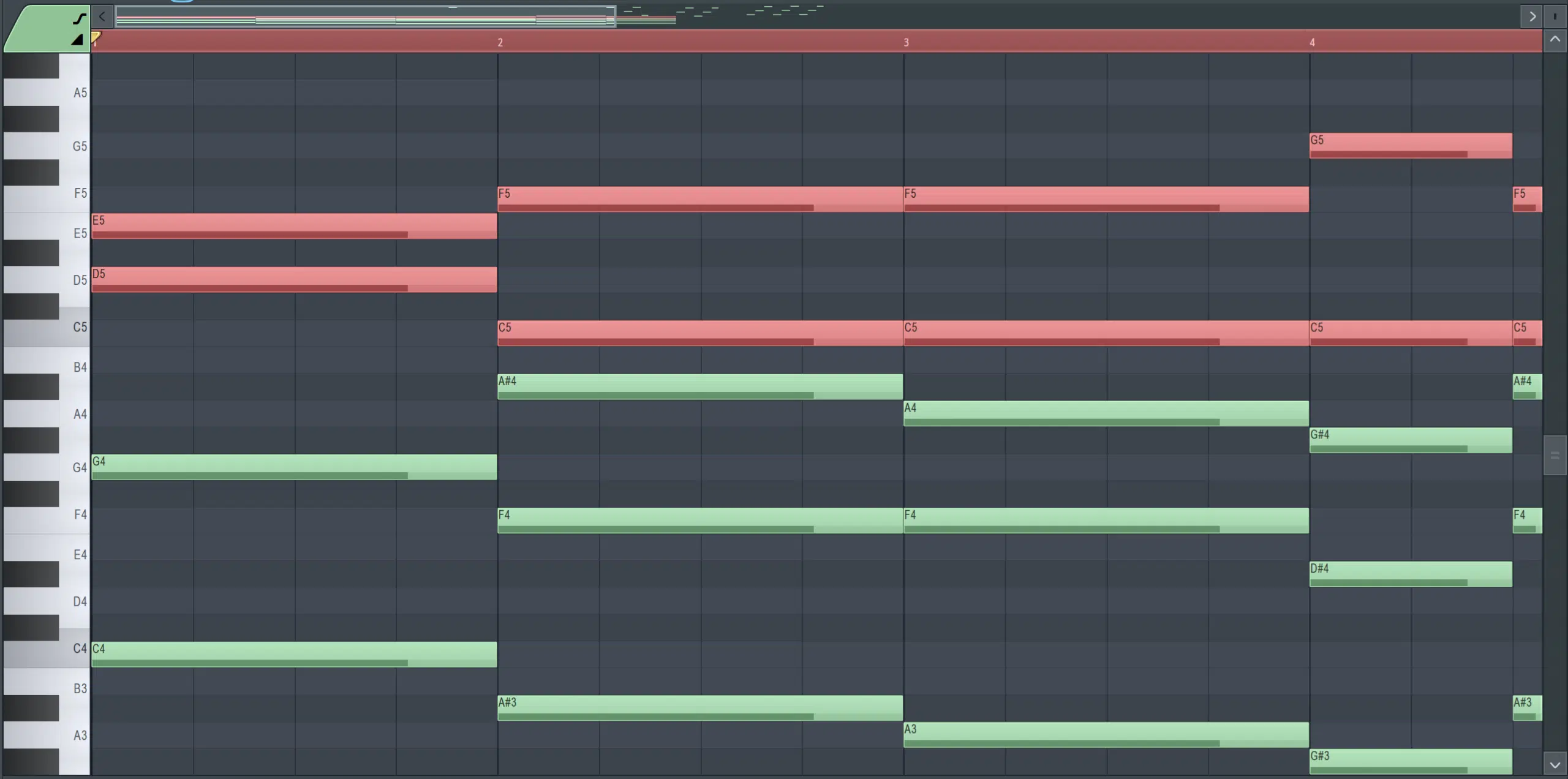
Extended Chords
Introducing your own chord progressions into a remix is an excellent way to leave your mark and make sure your track is interesting and unique.
This doesn’t necessarily mean you have to completely discard the original harmony…
However, you can add new chords to create tension, build-ups, or even entirely new sections within the remix.
These types of changes can breathe new life into the track, especially in genres like hip-hop and trap, where the harmonic backdrop can set the tone for the entire piece.
Try experimenting with:
It can help you add some extra interest and depth to your remix.
These techniques can help you create your own chord progression that is a more complex and emotionally powerful backdrop for the vocal tracks.
For instance, adding a ninth or eleventh to a chord can give your remix a more expansive, atmospheric quality.
Don’t be afraid to step away from the genre/style of the original track when playing around with different chord progressions.
A hip-hop song, for example, might be transformed with the introduction of dark, minor chords typical of trap music.
It will create a completely different vibe to help you manifest the right song to match your vision.
Your aim should be to support the song’s mood and narrative with your harmonic choices 一 enhancing the original while showcasing your creativity.
#6. Developing Unique Synth Sounds
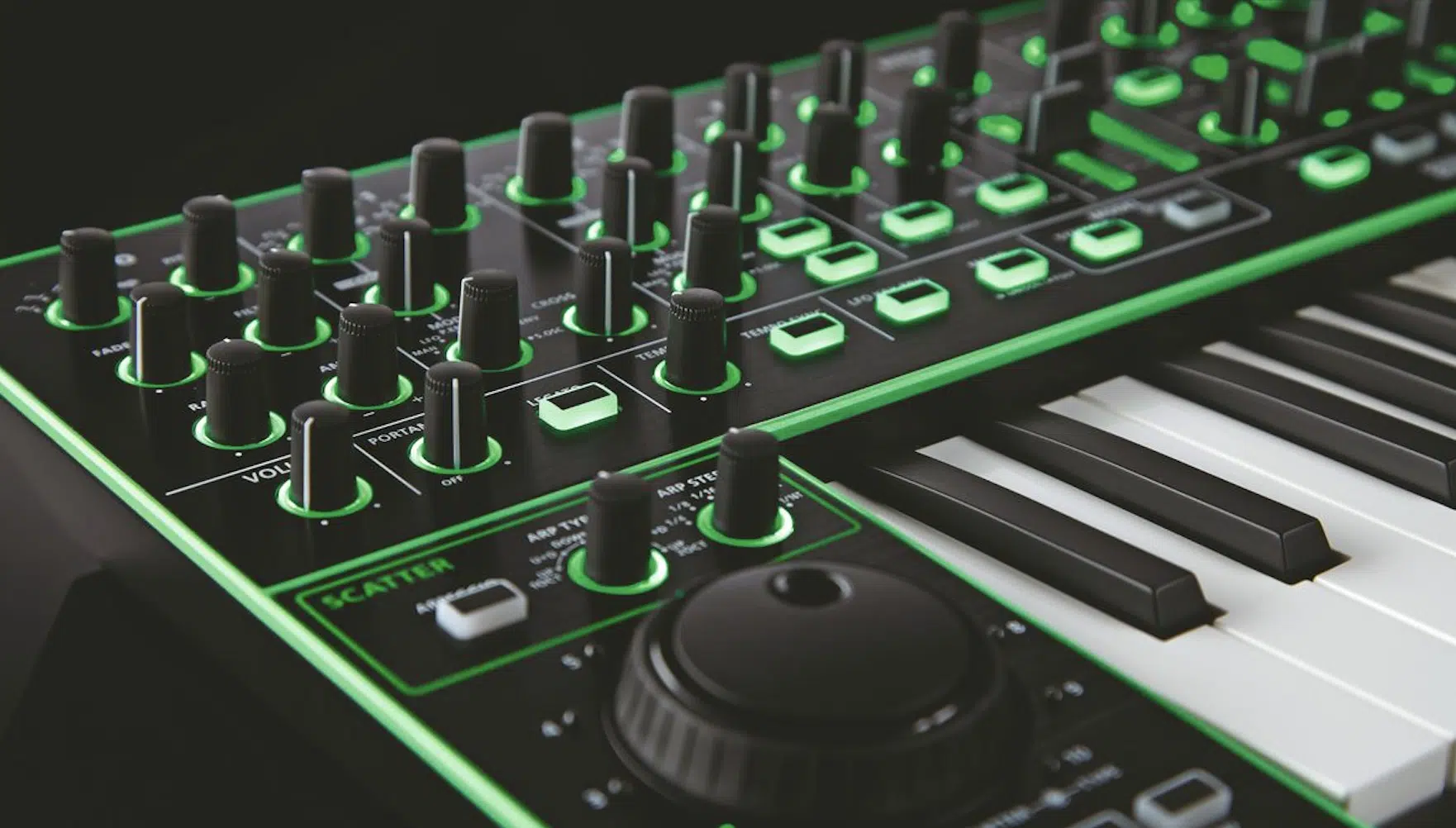
Synthesizers are invaluable tools in modern music production that offer endless possibilities for creating unique, new sounds.
When you’re learning how to remix a song, designing your synth sounds can set your track apart 一 giving it a signature feel that distinguishes it from the original.
This is especially true in genres like hip-hop, trap, and electronic music where synth sounds can define the sonic character of a track.
Start by exploring the basic waveforms (sine, square, sawtooth, and triangle) and understand how they can be combined and manipulated to create complex timbres.
Certain things will be your best friend when it comes to sculpting the sound to fit perfectly within your remix, like:
- Envelopes
- Filters
- Modulation sources (like LFOs and envelopes)
Remember, the goal is not just to create a sound that’s different but one that complements the original song’s elements and enhances the overall vibe of your remix.
Whether it’s a deep, booming bass for a trap section or bright, shimmering synth leads for a hip-hop break, your synth sounds should add depth and texture to your remix.
In turn, it will engage the listener and elevate your track beyond its original confines.
-
Pro Tip
When you’re making music/making remixes that include synth sound design, remember that experimentation is key.
Don’t be afraid to push boundaries and try unconventional settings.
Sometimes, the most innovative signature sounds come from happy accidents or from pushing a synthesizer beyond its typical use.
For example, modulating a synth’s filter with a high rate and depth can create percussive, rhythmic elements that add a unique flair to your remix.
#7. Rhythmic Innovations: Percussion Sounds and Basslines
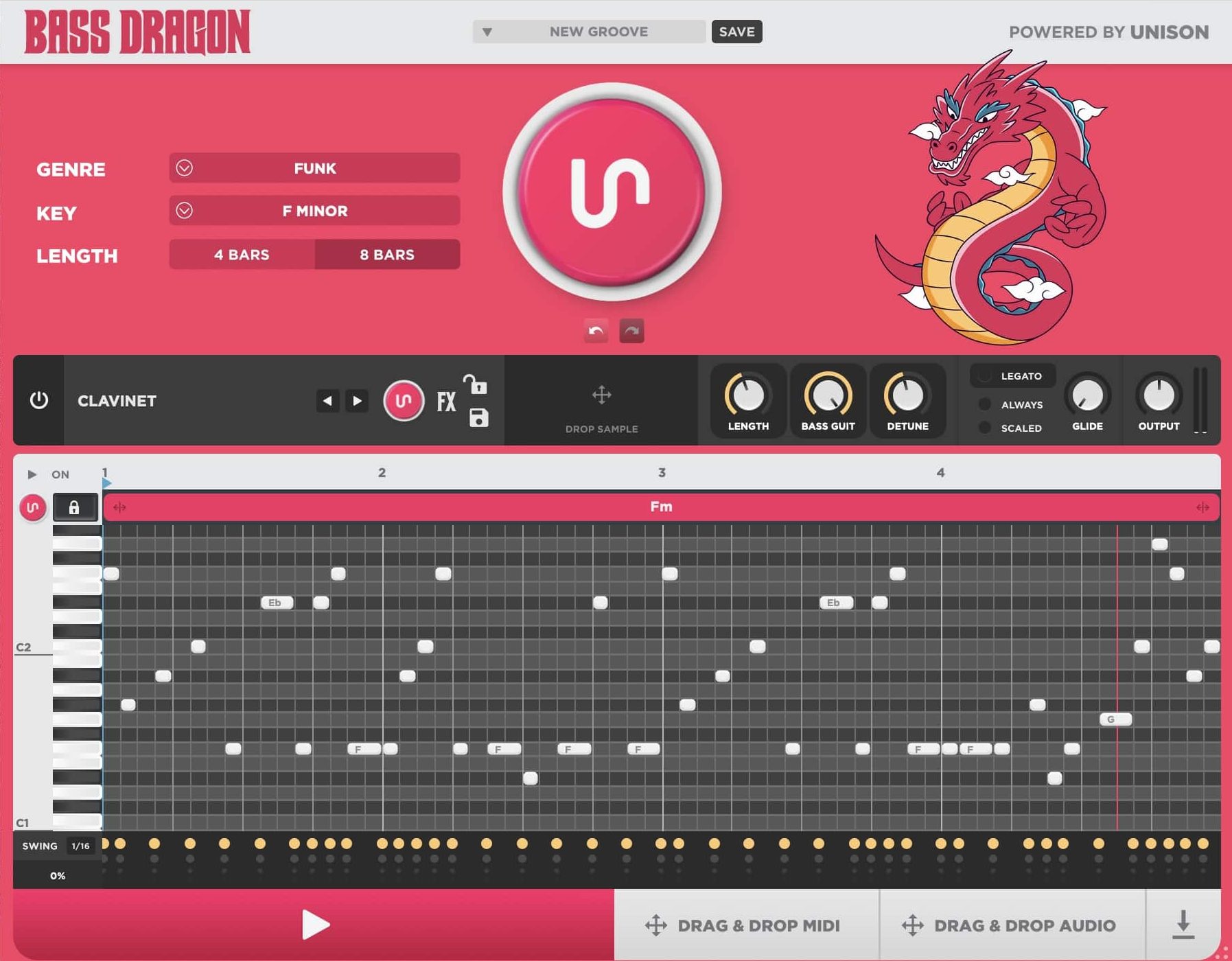
Check out Bass Dragon for the most innovative ideas around!
The rhythm section, particularly percussion and basslines, is the backbone of any remix, especially in rhythm-centric genres like hip-hop and trap.
Reinventing the rhythm of the original song for your official remix can transform its energy and feel, making your track stand out.
Start by dissecting the original beat and consider how altering its pattern, tempo, or sounds could change the vibe of the track.
When throwing down your bass lines, always think about how they interact with the kick drum and other percussive elements.
In trap music, the bass often plays a leading role 一 delivering the gut-punching low end that drives the track.
Experimenting with different synthesis techniques as a music producer looking to remix music and create new sounds can help you achieve the perfect foundation.
This includes:
- FM synthesis for gritty, complex textures
- Subtractive synthesis for smoother, rounder tones
Don’t overlook the power of silence and space in your rhythmic arrangements.
Strategic placement of rests and breaks can create tension and release, adding dynamism to your new original tracks.
When you remix music, incorporating unconventional percussive sounds or sampled noises can help you achieve that unique character.
It should reflect your creative vision in order to set your remix apart from other remixes.
#8. Utilizing Effects for Uniqueness
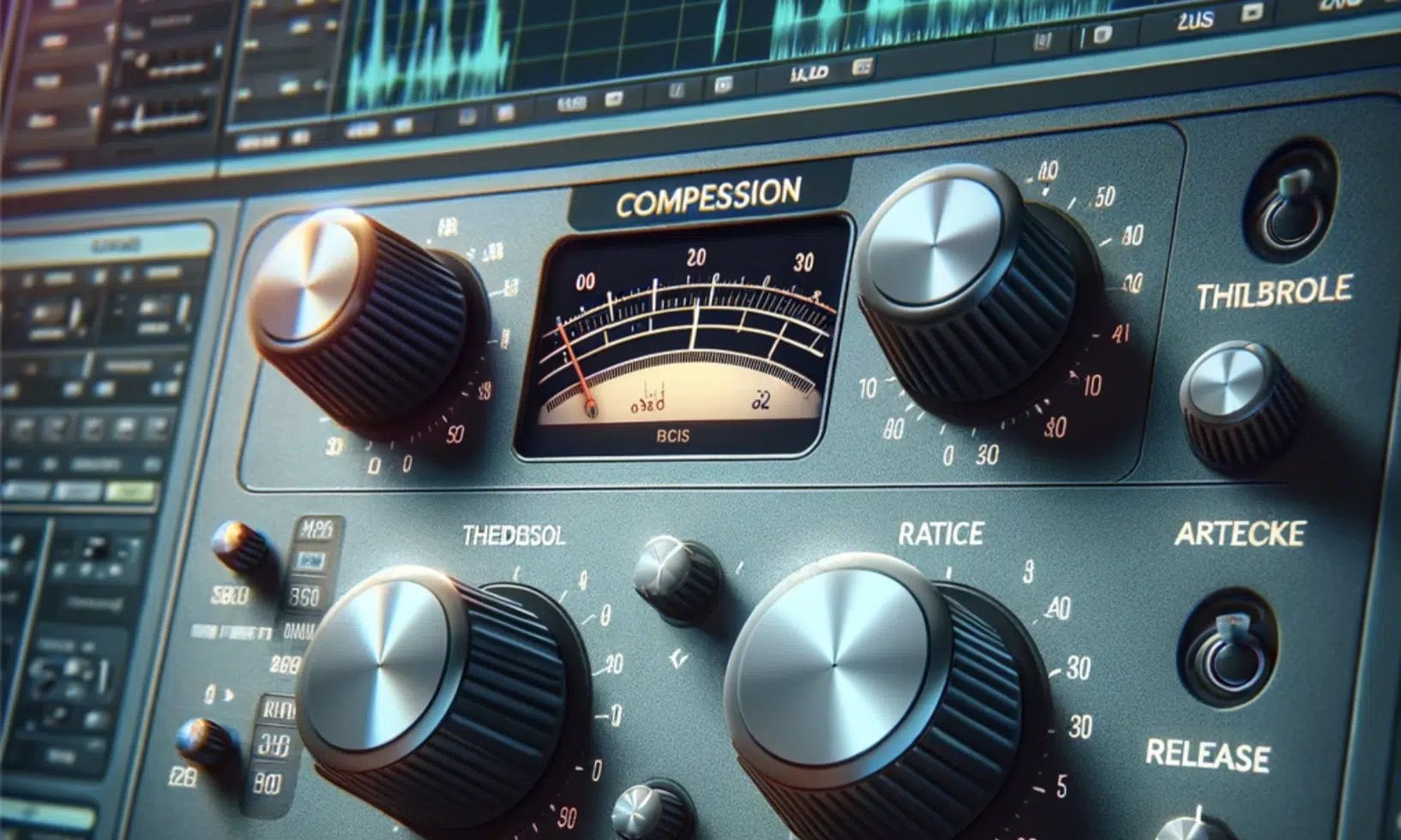
If you’re going to remix music like a pro, effects processing is non-negotiable, as they allow you to shape and color the sounds in your remix in distinctive ways.
From spatial effects like reverb and delay to dynamic effects like compression and distortion, the creative use of effects can give your remix a unique atmosphere.
For example, applying a generous amount of reverb to a snare drum can create a sense of space and depth 一 making it feel like it’s echoing in a large hall.
This can be particularly effective when you’re learning how to remix a song because it can create a dramatic build-up or original breakdown that will instantly captivate.
Similarly, using side-chain compression on your bassline, keyed to the kick drum, can create a pulsating effect that adds a compelling groove to the track.
Remember, the key to using effects is moderation and purpose.
Each effect should serve a specific role in enhancing the track, whether it’s to highlight a particular element, create a mood, or add movement and energy.
Experiment with chaining multiple effects together for more complex textures, but always keep the essence of the original song and your vision at the forefront.
#9. Breaking Down the Original Structure of Popular Songs

Analyzing and deconstructing the structure of popular songs (or your favorite songs) is an essential step in the remixing process.
Understanding how the popular songs are put together 一 from its intro, verses, choruses, and bridge to its outro 一 can provide you with a blueprint for your remix.
This doesn’t mean your remix must follow the same song structure as your favorite songs, but it gives you a starting point from which to innovate.
Think about how you can rearrange the song’s sections to create a new narrative or flow.
Perhaps the bridge from the original song becomes the focal point of your remix, or you introduce a completely new section that gives the track a different direction.
The structure of your remix should guide the listener through the track 一 creating anticipation and satisfaction through its progression.
-
Pro Tip
Don’t be afraid to break the rules when you’re learning how to remix a song and incorporating your own sounds.
If the original song has a traditional verse-chorus structure, your official remix could subvert this by blending elements from different sections.
It’ll create a non-linear narrative and keep people tuned in.
This approach can be particularly effective in any genre where the emphasis is often on mood and vibe rather than traditional popular song structures.
#10. Extracting and Utilizing Vocal and Instrumental Tracks

Gaining access to clean vocal stems and instrumental stems can be a game-changer for your final remix.
If the official original stems of the aren’t available, you might need to get creative with extraction techniques.
When you remix songs and run into this problem, certain tools, like spectral editing and phase inversion, can be a good starting point.
They can help isolate vocals from a full mix, though the results may vary depending on the track’s complexity.
Once you have your stems, think about how they can be used to serve your remix.
Instrumental tracks offer a wealth of material that can be manipulated, whether it’s a catchy guitar riff that becomes the backbone of your new beat or a bassline that you tweak to fit a different groove.
The key is to listen with an open mind and experiment with the possibilities each stem presents.
Taking advantage of these tracks effectively requires a good ear and technical skill.
Pay attention to how the original elements interact and consider how altering their relationships can create something new.
This might mean pitching down an instrumental track to give it a darker tone or slicing up a vocal phrase and using it as an original hook.
Your creativity in utilizing these stems is what will set your remix apart.
#11. Tweaking the Existing Melody
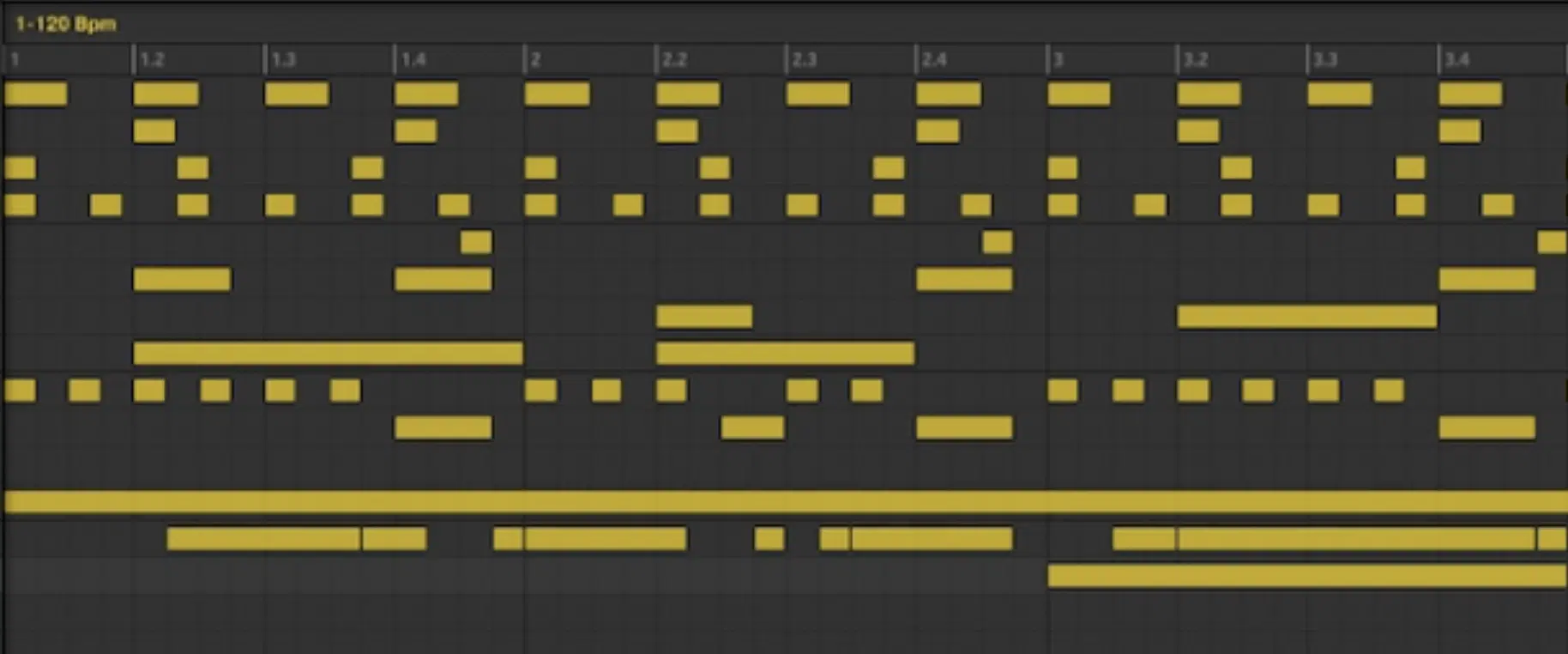
Tweaking the existing melody of an original song can transform a familiar tune into something entirely new and captivating.
This process involves tweaking the melody’s:
- Rhythm
- Notes
- Harmonic structure
For instance, you might take a memorable melody from popular songs in the electronic music genre and infuse it with elements of trap or hip-hop.
This alters its tempo and adding syncopated beats to give it a completely different energy for your official remix.
Software like FL Studio or Ableton Live offers powerful tools for melody manipulation, such as MIDI editing capabilities and pitch-shifting plugins.
It helps experiment with the melody until you think it’s perfect.
One effective technique for tweaking melodies is to utilize counter-melodies or harmonies that complement the original.
It can add depth to your own remix 一 creating a richer, more layered sound.
For example, if the original song has a straightforward, catchy melody, adding a counter-melody with a synth or piano in a higher or lower octave can enhance the track’s emotional impact.
-
Pro Tip

You can also try using modal interchange (borrowing chords from parallel modes) to introduce a fresh harmonic context.
One that redefines the melody’s mood and makes it more:
- Enchanting
- Uplifting
- Mysterious
- Etc.
It will help your original songs gain that competitive edge, plus you might get a few ideas that could enhance your workflow for the future.
Don’t shy away from using effects to creatively alter the melody of your favorite songs.
A delay effect can turn a simple melodic line into a rhythmic element of its own, while reverb can create a sense of space and atmosphere.
It makes the melody feel more ethereal and emotionally intriguing.
The melody is a fundamental element that ties your entire remix together, so give it the attention it deserves (nobody likes a slacker).
#12. Mixing and Mastering Your Remix
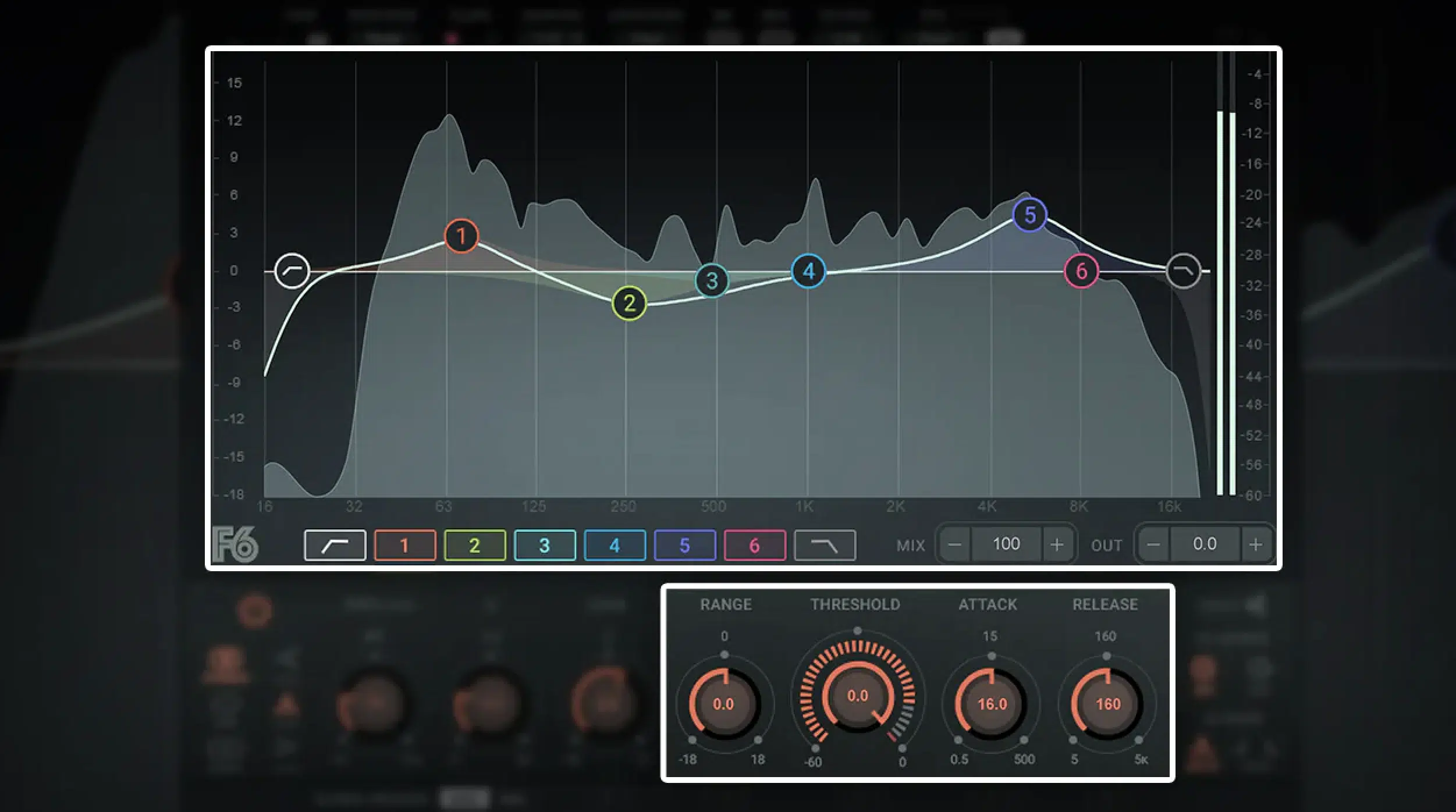
Mixing is where you blend all the elements of your remix (the vocal tracks, instrumental layers, basslines, and effects) into a cohesive whole.
It’s about:
It ensures every part of the remix plays its role without overshadowing others.
For example, in hip-hop and trap music, ensuring the kick and bass sit well together is crucial 一 they should be powerful yet not muddy.
Using sidechain compression can help the kick punch through the polished mix by momentarily ducking the bass whenever the kick hits.
Mastering is the final polish that prepares your remix for the world.
It involves adjusting the overall level, enhancing clarity and punch to ensure your song sounds good on various playback systems.
A well-mastered song can stand up next to commercial releases in terms of loudness and quality.
Using a limiter is key in this stage to boost the overall level without causing distortion.
Remember, mastering isn’t about making drastic changes…
It’s about subtle enhancements and ensuring your remix competes sonically with existing audio tracks in the genre.
Whether it’s one song or hundred songs, you should never slack this process.
Note
Both mixing and mastering require a critical ear and a deep understanding of audio processing tools.
Referencing your remix against audio tracks you admire can be incredibly helpful 一 giving you a benchmark for quality and sonic characteristics.
Don’t rush these stages; take your time to ensure your remix sounds polished and professional.
This attention to detail can make a huge difference.
This is especially true when you’re participating in remix contests where the competition is fierce and the right song will be picked.
If you want to know the 7 best sites for remix contests that can actually help you gain traction, we’ve got you covered.
#13. Participating in Remix Competitions & Remix Contests

Remix competitions and contests are excellent opportunities for music producers like you to showcase their skills, gain exposure, and even win prizes with your official remix.
These events often provide original stems from the recording artist, which gives you a high-quality starting point for your own remix.
Always read the submission guidelines carefully because each remix contest/remix competition has its own rules regarding:
- Genre
- Length
- Format of submissions
- Etc.
Participating in any type of remix contest/remix competition as music producers can also be a valuable learning experience.
It pushes you to work within specific constraints and often against a deadline 一 helping you sharpen your skills and creativity when making remixes/making music.
Even if you don’t win, the feedback you receive about your other song and the experience gained can be incredibly beneficial for your original productions.
Plus, your official remix will be heard by the original artist, record labels, and a wider audience.
This will help increase your visibility in the original music production community and maybe even boost your confidence when you remix songs.
Look for remix competitions/remix contests that align with your style and interests.
Winning or simply being a finalist in remix contests and remix competitions can significantly boost your profile.
It can help when it comes to getting your name out there and selling music.
In turn, it could lead to some sick opportunities for your own music career (or even attract the attention of record labels).
How to Remix a Song: Final Thoughts
When you’re learning how to remix a song, you’ll need dedication, analyzation skills, and the desire to get creative.
By following these guidelines and pouring your innovation into each remix, you’ll be able to create tracks that stand out in competitions.
And resonate with listeners worldwide too, of course.
To further enhance your remix skills, you’ll need to understand song structure, mixing, the implementation of creative effects, etc. as we talked about…
That’s where these highly-renowned, free Famous Beatmaker Template Essentials come into play.
This legendary pack contains the most accurate and organized structures of hit tracks in Ableton, FL Studio and Logic Pro.
Every template contains the structures of the hit tracks that are recognized as some of the most hypnotizing songs around.
You can use any sounds and techniques you want to tweak, customize, and truly make each template your own 一 learning beneficial remixing methods in the process.
Remember, each remix is a reflection of your unique perspective as a music producer.
So, unleash that creativity inside you, push the boundaries, experiment constantly, and let your remixes take the world by storm.
Until next time…







Leave a Reply
You must belogged in to post a comment.